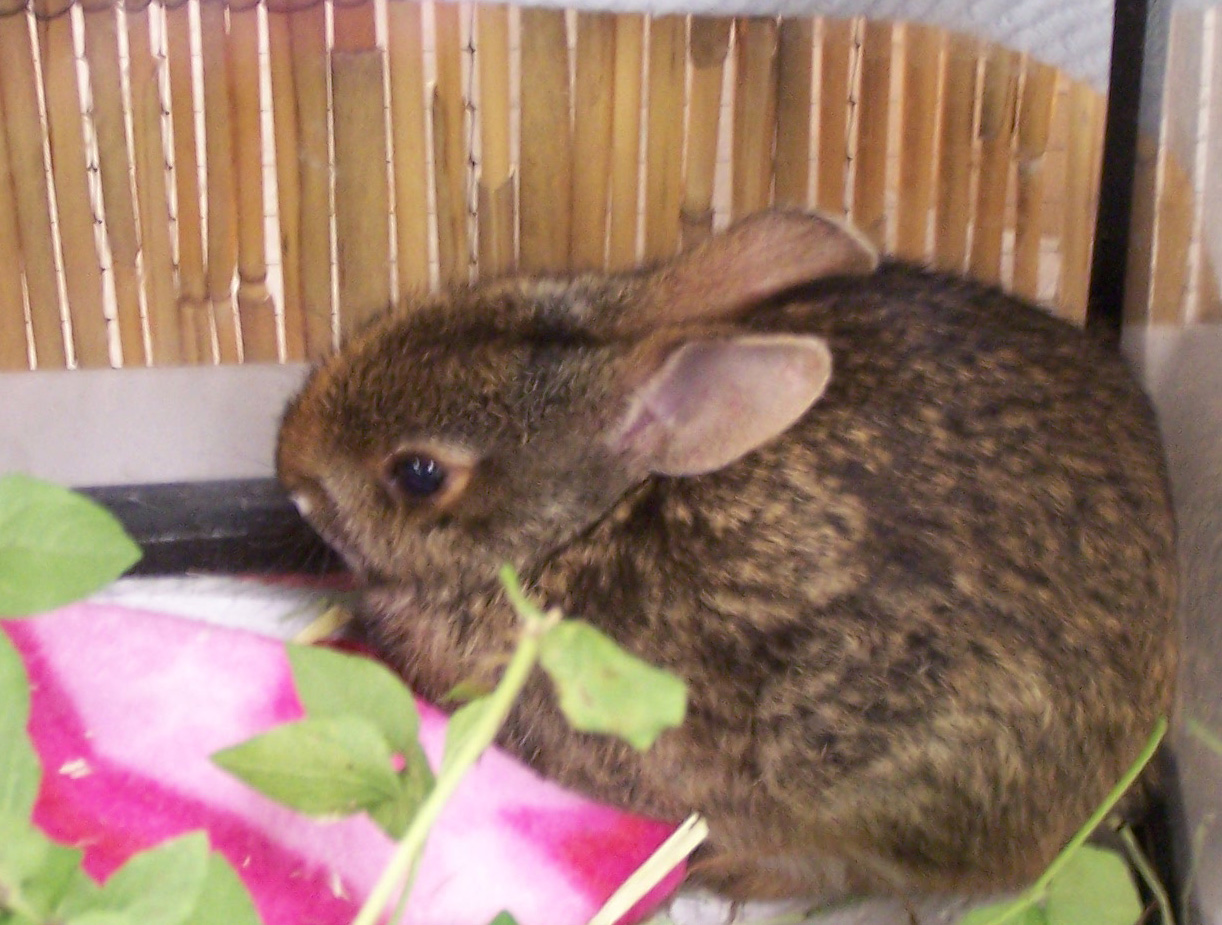Bunnies Hop to the Wildlife Center
Baby bunnies come to the Wildlife Center for many reasons. When the rains are plentiful and the grass is lush, most of the babies are kidnapped from mother rabbits by well meaning homeowners. For more information, two articles have already been written on this subject. http://wildlifecenteroftexas.org/2011/03/bunnies-bunnies-everywhere/ and http://wildlifecenteroftexas.org/2010/06/two-for-tea/ When drought occurs, more care must be taken, because it cannot be assumed that unattended young are well cared for. Call the Wildlife Center at 713-861-9453 for assistance. Baby bunnies are one of the more difficult mammals to rehabilitate since they do not nurse per se. They also nurse very slowly and take four to five times longer to feed than a squirrel or raccoon of the same age. Very young bunnies must be placed with our permitted rehabilitators and cared for at their homes since they require feeding into the night. Once the bunny can go from six p.m. until seven a.m. without feeding, it can come back to the Wildlife Center for care. Our off-site rehabilitators are our unsung heroes since they accept animals that are too sick, injured or young to thrive at the Wildlife Center. Lagomorphs superficially resemble rodents, but differ in several ways. The most obvious is the unusual arrangement of the front teeth, behind each prominent incisor is a small peg-like tooth. Like rodents, lagomorphs must constantly wear down the front teeth, otherwise they can grow to the point that the animal cannot eat. The order Lagomorpha includes the family Leporidae which include rabbits and hares and the family Ochotonidae which include pikas. Texas is home to two genera and five species of rabbits and hares. Three species can be found in the greater Houston area. Two species are limited to [...]

